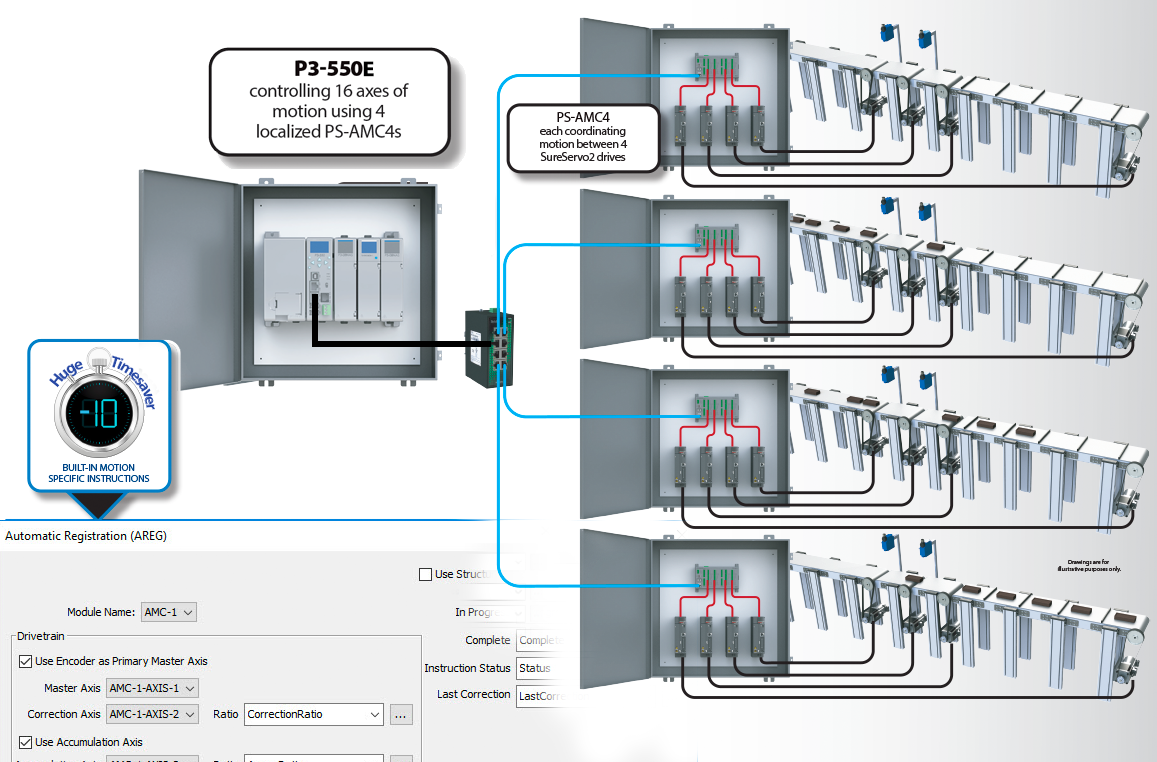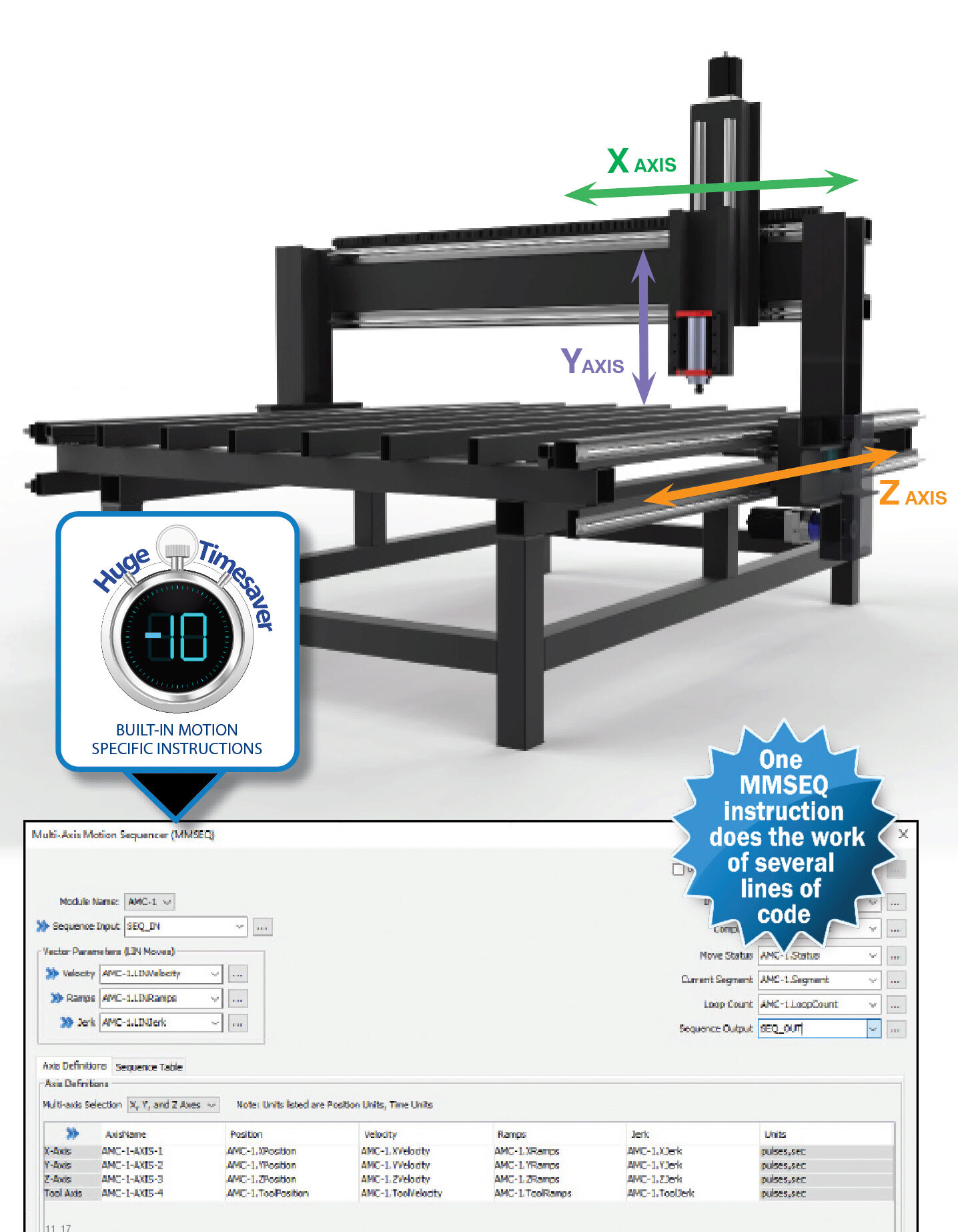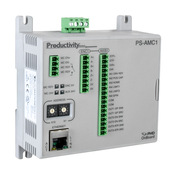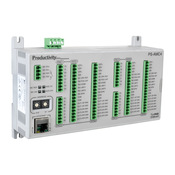 Cookies are not enabled on your browser.
Cookies are not enabled on your browser.Cookies are required for our site. Please enable cookies in your browser preferences to continue.
- Barcode / RFID / Vision
- Bulk Wire & Cable
- Cables (Terminated)
- Circuit Protection / Fuses / Disconnects
- Communications
- Drives & Soft Starters
- Enclosure Thermal Management & Lights
- Enclosures & Racks
- Field I/O
- HMI (Human Machine Interface)
- Hydraulic Components
- Motion Control
- Motor Controls
- Motors
- Pneumatic Components
- Power Products (Electrical)
- Power Transmission (Mechanical)
- Process Control & Measurement
- Programmable Controllers
- Pushbuttons / Switches / Indicators
- Relays / Timers
- Safety
- Sensors / Encoders
- Stacklights
- Structural Frames / Rails
- Tools & Test Equipment
- Valves
- Water (Potable) Components
- Wiring Solutions
- Retired Products
- Programmable Logic Controllers
- Productivity1000 PLCs
- Productivity2000 PLCs
- Productivity3000 PLCs
- ProductivityCODESYS
- LS Electric XGB Series PLCs
- ProductivityOpen
- CLICK PLCs
-
Do-more H2 PLCs or
Do-more T1H Series - Do-more BRX PLCs
- C-more Touch Panels
- AC & DC Drives
- Motion Control Components
- Servos
- StrideLinx
- Pneumatics
Configuration Utilities
- PLC Family Selector
- P1000 PLC Systems
- P2000 PLC Systems
- P3000 PLC Systems
- ProductivityCODESYS
- CLICK PLC Systems
- Do-more® BRX PLC Systems
- LS-Electric® XGB PLC Systems
- Productivity®Open Systems
- Datalogic® Safety Light Curtains
- LS-Electric® Servo Systems
- Nitra® Pneumatic Grippers
- Object Detection (Sensors)
- PAL Controller Configurator
- Precision Gearbox Selector
- Protos X® Field I/O
- Quadritalia® Modular Enclosures
- Stellar® Soft Starters
- Stepper System Selector
- SureFrame T-slot Extrusion
- SureMotion® XYZ Gantry
- SureServo2® System Selector
- SureStep® Linear Actuators
- Timing Belts & Pulleys
- Werma® Stacklights
- ZIPLinks

Huge I/O capacity
Start with high-density I/O modules (up to 64 inputs or outputs per module) install those in an 11- slot base, and you've got over 700 I/O in a single rack! Add up to 4 local racks to your local base group, and the possible I/O total grows to over 3,500 I/O points.
Still need more? Add up to 16 Remote Slave racks, each with its own set of four local expansion racks and the number is truly staggering - well over 59,000 I/O points.

Tremendous processing power
The CPU's lightning fast processor executes your ladder code quickly and efficiently!
This processing power also means that there are practically no limits on the number of timers, counters, and PID loops for your application. And the powerful task management tools built in to the software help you streamline your ladder code for maximum efficiency.
Simple motion control by design



Multi-axis motion control that's accurate and affordable
The PS-AMC motion controller is an ideal solution for motion control applications requiring several independent axes of motion and/or coordinated motion between some or all axes. Available in one to four axes models, the PS-AMC provides highly accurate positioning using encoder fed control (one encoder per axis). Used in conjunction with select Productivity CPUs and programmed with the FREE Productivity Suite software, the AMC can supply up to 1MHz of pulse-train command signals to servo or stepper drives for extremely responsive movements in any application.
Flying cut-off application
The primary function of a flying cut-off system is to synchronize the speed of a servo-driven carriage, on which a cutting mechanism is mounted, with the speed of a continuously fed material to make a perpendicular cut without stopping the feed. These applications are used where it isn't practical to stop and start a continuous production operation.
The flying cut-off shown above employs four axes of motion, (1) a rotating pipe cutter, (2) a continuous pipe infeed system, (3)carriage positioning drive, and (4)outbound conveyor. With the PS-AMC4, all four of these axes can be easily controlled and synchorinized within the same controller, and it's only $465

Easy control up to 16 axes of motion across your facility
Each remote I/O capable Productivity2000/3000 CPU can control up to 16 axes using four PS-AMC4 controllers each coordinating up to four axes on their own (P1000 systems can control up to 4 axes using 1 PS-AMC controller). So whether you have a single system with 4 or more axes of motion, multiple coordinated systems across your facility, or if you're anticipating future expansion, the PS-AMC is a perfect solution for your motion application.
The Productivity Suite software provides the following for the PS-AMC:
- Motion profile set-up with easy-to-use built-in motion instructions
- Software test tool allows you to test the hardware without any ladder code & very useful for validating the physical wiring
- Real-time status and diagnostic information
- Plug-and-play hardware configuration using auto-discovery of the AMC units
Smart conveyor application
When it comes to package handling, pick-and-place or similar applications, product spacing is very important. One way to ensure proper spacing is to send the products through a smart conveyor system. With a smart conveyor, products arriving from an upstream process are brought to the right distance and phase position using several belts that are electronically coupled with each other through a PS-AMC controller. Each conveyor's servo motor will speed up or slow down to achieve the appropriate spacing between products. Four coordinated four-belt smart conveyor systems can be controlled with just one CPU.


Productivity from A to X-Y-Z
When it comes to X-Y-Z positioning, commonly achieved with gantry systems, the PS-AMC motion controller makes it easy. With the PS-AMC, Productivity CPU, and the Multi-Axis Motion Sequencer (MMSEQ) instruction, you can:
- Perform smooth movements between two or more points in up to 3 axes, plus an optional tool axis.
- Easily code For/Next or Do/While loops to repeat portions of the sequence, as desired.
- Iterate through up to 64 steps in a motion sequence, including adding timers and pauses between move actions.
Milling/routing application
When milling or routing materials to match specifications, accuracy is key. Just the slightest misstep during a cut can cause a complete redo and wasted material. Most milling machines utilize three axes of motion (X , Y, and Z axes) and require accuracy that is repeatable time and time again, making these types of applications perfect for ProductivityMotion components.
Precise linear interpolation
A common task in motion control applications is straight line motion. This can be accomplished using multiple axis of motion that work together to perform a linear move from one point to the next. This is also known as linear interpolation. The PS-AMC combined with a Productivity CPU allows you to precisely control each axis so that they all move in unison to reach the target position at the same time; resulting in a straight line from start to finish.
Precise positioning for when close enough just won't cut it

With machinery that uses coordinated motion where one move is dependant on another, especially in situations where a secondary move can only happen once the first has cleared its path, positioning inaccuracies can cause major production loss or even substantial equipment damage. Even small fluctuations can compound and become big issues if not corrected in time. The Productivity AMC has features built-in to compensate for measurement drift and allows on-the-fly position corrections to maintain superior accuracy.
Rotary table applcation
Rotary table applications are very common in manufacturing and can be used to move products into position for drilling, welding, milling, or even for simple tool changes. Behind the scenes, rotary tables aren't very complicated and can be controlled with simple index moves to index the product to the next station or to a specific station.
Depending on the number of stations, one PS-AMC4 may be all you need to handle the rotation of the table, as well as, product placement and station movements.
FREE SOFTWARE!
Download as often as you need. No license of key needed
Stay on target!
One inherent problem with this type of application (as well as other continuous, same direction motion applications), is when the difference between steps/stations is fractional. If the controller doesn't account for these fractions, the system will drift. The PS-AMC controller takes this into consideration and will accurately handle fractional steps to prevent drifting over time and always remain on target.

A-M-C, easy as 1-2-3!
1 - Install Hardware
Once your PS-AMC arrives, install the controller either locally to or remotely from the CPU and connect the needed Ethernet cable(s). Wire up the system, power the controllers and download the free Productivity Suite software to your PC if you haven't already. At this point, you could use the software test tool in Productivity Suite to test the hardware and verify the physical wiring, otherwise on to step 2.

2 - Configure Hardware
With the communication cables connected, and power applied, the Productivity CPU will auto-discover any PS-AMC controllers that are on the same Ethernet network. Once discovered, you can easily set the hardware parameters and modify data tags from within Productivity Suite.

3 - Set Up Motion Profile
Productivity Suite has numerous built-in motion instructions that allow you to quickly and easily configure standard motion profiles like flying cut off, rotary tables and more using simple drop-down selections. If you need something different, you can also create your own custom move profiles using the Motion Sequencer (MSEQ) instruction. Create your profile, download the updated project file to the CPU and you are done!

Practical motion control for simple systems

$619.00
Use the P3-HSI High-speed Input Module for high-speed counting and registration functions.
The P3-HSI is a high-speed (1MHz) input module that has both differential and single-ended inputs. This module accepts Pulse/Direction and Quadrature signals on each of two independent input channels. It also provides four general purpose high-speed inputs and four general purpose 5-24VDC @ 0.5 Amp outputs.

$619.00
Use the P3-HSO High-speed Output Module for simple moves, velocity moves, and flexible homing routines.
The P3-HSO is a high-speed (1MHz) output module that supports Pulse/Direction, Step Up/Step Down and Quadrature pulse outputs on each of two independent output channels. It has both line driver and open drain outputs. Additionally, it has six general purpose inputs and four general purpose outputs.

Easy configuration
Both the High Speed Input (P3-HSI) and High Speed Output (P3-HSO) modules can be configured using Productivity Suite's intuitive function blocks. Simply define your tags for each input/output channel on the appropriate Channel (1 or 2) Setup Tab.
And with Productivity Suite's built-in instructions, like Find Home (HOME), Simple Move and Velocity Move (SMOV), it's easier than ever to program routines based on target position, target velocity, accel rate, decel rate, and more.
Pneumatic stamping application
The Registration (REG) instruction can trigger several internal and external position based events such as the capturing of positions, setting a tag, counting events and turning on, off or pulsing an output. The action can also be delayed by a set number of pulses as in this pneumatic stamping application. The P3-HSI module is used to accurately stamp parts as they move past on a conveyor. A blank part is detected by the sensor and the instruction is triggered. The output or stamping function is delayed by the appropriate number of encoder pulses. Once the part travels to the precise location under the stamp, the pneumatic stamp is activated and the image is stamped onto the part
Pick and place application
The Find Home (HOME) instruction initializes this pick and place application on power-up. Homing routines are used to align the P3-HSO channel position to a known real-world physical position. Choose from four preconfigured move routines and simply identify the desired speed, direction and acceleration.


Integrated high-speed module testing
The integrated High-Speed module testing tool is a great way to test your hardware, including the module, module wiring, I/O operations and connected stepper or servo (if applicable). With this simple tool, no programming is necessary to see if you are getting pulse signals from your high-speed output module.

Don't wait. Get started now for FREE!
The Productivity Suite programming software is available for download free of charge. Take it for a test drive before you buy or get started on your project immediately. There are no licensing fees or maintenance charges to be concerned with and any subsequent upgrades are available for free download as well. If you need assistance, the embedded help file contains detailed information on over 260 topics; also check out our instructional videos or give us a call at 770-844-4200 - we are here to help.
FREE Software!
Download as often as you need. No license or key needed. Click here to download the free software.
Your success is our success!
As the world around us becomes more and more automated, an understanding of electrical control systems becomes more and more vital. To better
serve our customers and the industry we rely on, we offer absolutely free online training to anyone looking to learn PLCs. No purchase
necessary! This training covers both basic PLC fundamentals as well as specific training on the Productivity Suite Programming Software.
Check out this free training here:
www.automationdirect.com/plc-training
Check out our job openings
Free Online PLC Training
FREE Video Tutorials
FREE e-Newsletter
Automation Notebook
Product Literature
White Papers
News, Product and Training Bulletins
E-Books
 Safe &
Secure
Safe &
Secure

We accept VISA, MasterCard, Discover, American Express, PayPal or company purchase orders.
Voted #1 mid-sized employer in Atlanta
Check out our
job openings

